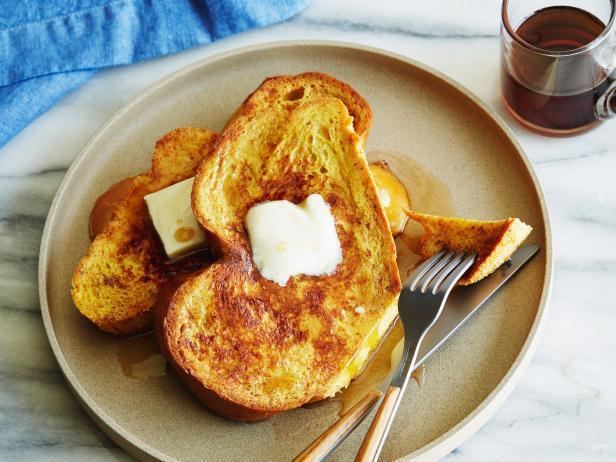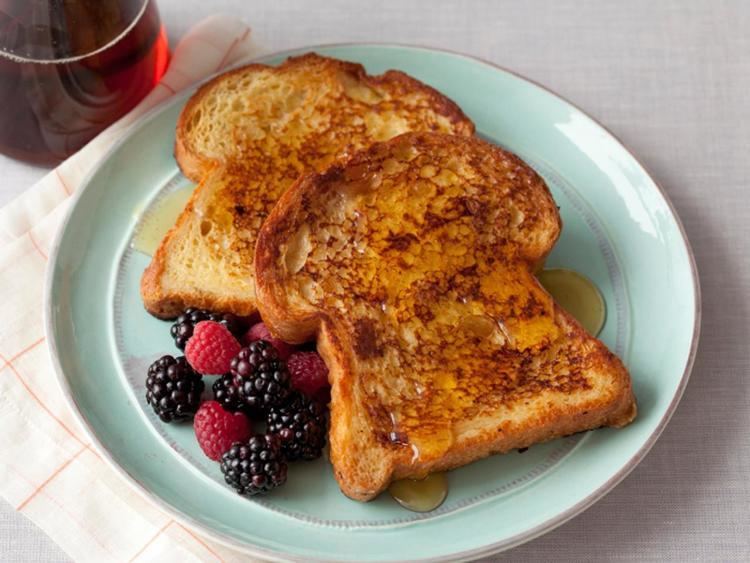Serving temperature Hot, with toppings | ||
Similar Toast, Pancake, Omelette, Bread, Scrambled eggs | ||
How to make french toast casserole
French toast, also known as eggy bread, Bombay toast, German toast, gypsy toast, poor knights (of Windsor), or Spanish toast, is a dish made of bread soaked in milk, then in beaten eggs and then fried.
Contents
- How to make french toast casserole
- Breakfast recipes how to make easy french toast casserole
- History and names
- Preparation and serving
- Variations
- France
- Hong Kong
- Spain
- References
Breakfast recipes how to make easy french toast casserole
History and names
The earliest known reference to French toast is in the Apicius, a collection of Latin recipes dating to the 4th or 5th century; the recipe mentions soaking in milk, but not egg, and gives it no special name, just aliter dulcia "another sweet dish".

Under the names suppe dorate, soupys yn dorye, tostées dorées, and payn purdyeu, the dish was widely known in medieval Europe. For example, Martino da Como offers a recipe. French toast was often served with game birds and meats. The word "soup" in these names refers to bread soaked in a liquid, a sop.

The usual French name is pain perdu (French: [pɛ̃ pɛʁdy], "lost bread", as it is a way to reclaim stale or otherwise "lost" bread. It may also be called pain doré "golden bread". The term pain perdu was formerly used metaphorically to mean sunk costs.
A fourteenth-century German recipe uses the name Arme Ritter ("poor knights"), a name also used in English and the Nordic languages. Also in the fourteenth century, Taillevent presented a recipe for "tostées dorées".
There are fifteenth-century English recipes for pain perdu.
An Austrian and Bavarian term is pafese or pofese, from zuppa pavese, referring to Pavia, Italy.
Preparation and serving
Slices of bread are soaked or dipped in a mixture of beaten eggs, often with milk or cream. Sometimes sugar, cinnamon, nutmeg, or vanilla are added to the mixture. The slices of egg-coated bread are then fried on both sides until they are browned and cooked through. Day-old bread is often recommended by chefs because the stale bread will soak up more egg mixture without falling apart.
The cooked slices may be covered with sugar or sweet toppings such as jam, honey, fruit, or maple syrup, or served as a savory dish with ketchup or another sauce.
Variations
The bread may be dipped in milk only, with the egg mixture added afterwards.
The bread may be soaked in various other liquids, such as wine, rosewater, or orange juice, either before or after cooking.
Formerly, the dish was eaten more as a soup than dry.
France
In France, pain perdu may be eaten as a dessert, an afternoon tea snack ("goûter"), or more rarely as a breakfast.
Hong Kong
Hong Kong–style French toast (Chinese: 西多士; literally: "western toast") is made by deep-frying sliced bread dipped in beaten egg, served with butter, and topped with golden syrup or sometimes honey. It is frequently made as a sandwich, with a sweet filling. It is a typical offering in Hong Kong teahouses (cha chaan teng).
Spain
Torrija is a similar recipe traditionally prepared in Spain for Lent and Holy Week. It is usually made by soaking stale bread in milk or wine with honey and spices. It is dipped in egg and fried with olive oil. This cooking technique breaks down the fibres of the bread and results in a pastry with a crispy outside and smooth inside. It is often sprinkled with cinnamon as a final touch.
Torrijas or torrejas were first mentioned by the Spanish composer, poet and playwright Juan del Encina (1468–1533) in his Cancionero, published in 1496. In "Anda acá pastor" one reads: "En cantares nuevos / gocen sus orejas, / miel e muchos huevos / para hacer torrejas, / aunque sin dolor / parió al Redemptor".
